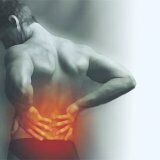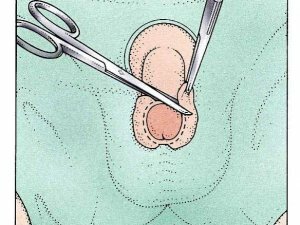Methods of treatment of urinary incontinence in women

The most common urological problem in the beautiful half of the population is urinary incontinence. Such a problem causes a woman inconvenience, in addition, the problem has a negative impact on the life of a woman, because it gives her suffering, both physical and moral. However, modern methods of treatment of urinary incontinence in women can achieve a 100% result.
Methods of treatment
Before choosing a method of treatment for this problem, the doctor determines the causes that caused the development of this pathology, and also determines the stage of the disease development. The given disease is treated by operative and conservative methods.
Conservative treatment of
Basically, conservative therapy is prescribed to patients who, for some reason, are contraindicated in the operation, as well as with an unexplained manifestation of the disease.
The main method of conservative treatment is based on special exercises aimed at strengthening and training the pelvic floor muscles. Special exercises strengthen the organs of the small pelvis, as well as the muscles of the abdominal press.
To normalize the functioning of the bladder, various physiotherapeutic procedures are usually prescribed with the use of medications that reduce the hyperactivity of the bladder.
If the disease is started or conservative therapy does not give proper results, then they resort to surgical intervention.
Modern methods with minimal invasiveness
Since the times of our grandmothers and mothers, the therapeutic possibilities for treating this disease have improved markedly, this factor is especially encouraging for women who decided to choose the best method of treatment of urinary incontinence against the background of stress. Women today often prefer to be treated with techniques with minimal invasiveness. And although such techniques are "newcomers", but they have already shown their effectiveness. In addition, the use of such techniques reduces soreness, shortens the recovery period.
For the treatment of problems use slings( nets) - a flexible and soft system of surgical nets that support and strengthen the urethra in the right anatomical position. Their action can be compared to a hammock. A similar technique in the treatment of stress urinary incontinence in women showed good results - the effectiveness of the technique, according to clinical studies, was more than 90%.
A little about the procedure
The procedure for setting the grid consists of 2 stages, although the techniques may differ:
- An incision or one small incision is made on the abdomen, in the inguinal fold or in the vagina.
- Through the notches the grid is placed under the urethra, while creating a kind of supporting hammock from the net.
The slings are made so that the tissue cells can sprout through them. Thus, the mesh remains in place, and the fabrics provide additional support.
Surgical treatment
Surgery is a more traumatic method of treatment, so before agreeing to this method, find out about all side effects, as well as possible risks.
Colposia is an operation during which the neck of the bladder, as well as the urethra, is fixed in a position that is higher than the anatomical one, which allows eliminating the symptoms of the disease. Agreeing to this method of treatment, it is worth remembering that after an operative intervention you will have to recover for a long time.
Neuromodulation is a special electrode that is implanted in the spinal cord and like a pacemaker by electrostimulation normalizes the pathological reflexes that arise between the pelvic floor muscles, the urethral sphincter and the bladder. This method is effective in urgent urinary incontinence.
The biofeedback method is used to treat mixed, stressful and urgent urinary incontinence. This technique involves the use of electrodes that modulate optical signals and audio signals during contraction of the pelvic floor muscles. Using such signals, a woman can learn to control muscle spasms, which will allow her to fully control urination. The effectiveness of this technique varies, it all depends on the type of the disease.



